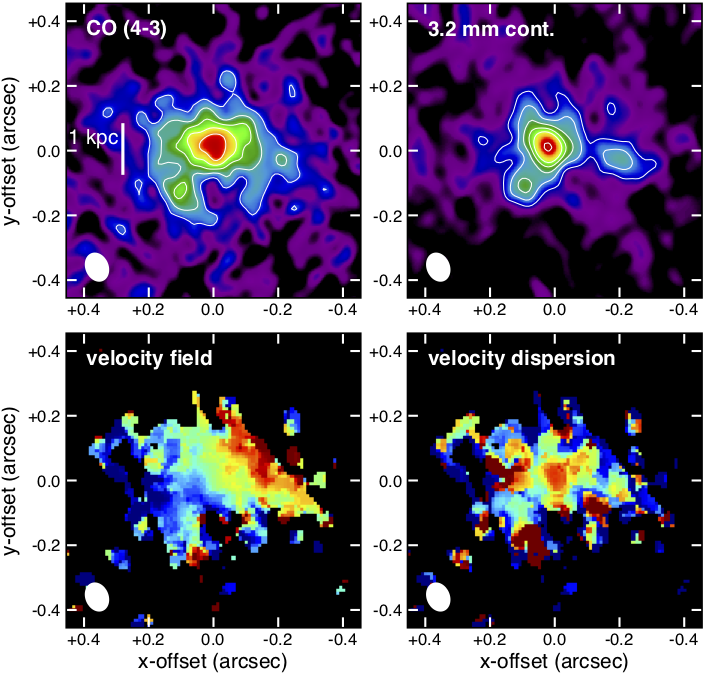Science Highlights - A clumpy, rotating gas disk in an extreme starburst galaxy at z=4
|
|
High-redshift submillimeter galaxies are very compact with an effective radius of 1 kpc, comparable to massive quiescent galaxies at the Cosmic Noon. The small angular extent of these galaxies (0.1-0.2") makes them difficult to spatially resolve and to study the spatial and kinematic structure. In a recent Nature paper, Ken-ichi Tadaki and his collaborators mapped out the molecular gas and dust in an unlensed submillimeter galaxy at z=4.3 by exploiting ALMA long-baseline observations of the CO(4-3) line and the dust continuum emission. The 0.06-0.08" resolution data show that the central region forms a complex of off-center clumps while the kinematics is characterized by an ordered rotating disk. The total gas mass is derived from CI(1-0) and CI(2-1) observations, without the uncertainties of CO-to-H2 conversion factor and gas excitation. The Toomre analysis indicates a gravitationally unstable gas disk, supporting the scenario that the clumps are formed through gravitational instability in the central region. These observations demonstrate the power of ALMA to dissect high-redshift galaxies without a gravitational lens.
|

